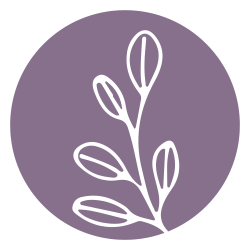Menstrual Cycles 101
Written by Dr. Reecha Panchal, ND
Period problems are a common concern among the women I see in practice, and I often find that women have a lot of questions on “regular” menstrual cycles. Periods are also seen as an inconvenience to many women. Let’s talk about your monthly cycle!
In December of 2015, the ACOG (American College of Obstetricians and Gynecologists) released a paper titled “Menstruation in girls and adolescents: Using the menstrual cycle as a vital sign.” The research suggests that the female menstrual cycle is an important indicator for a woman’s health and it should be monitored regularly and discussed with general healthcare practitioners.
Around the ages of 12-15 years, adolescent girls will enter menarche - an important milestone in physical development. Typically, girls will experience their first period in this time. Commonly, an adolescent girl will experience irregular menstrual cycles for the first three years. After which, menstrual cycles will become stabilized and cycle every month.
On average, adult women experience a menstrual cycle length of 28-35 days. There are many conditions, such as endometriosis, PCOS (check out our blog on this), hypothyroidism, etc along with a unique genetic code, dietary and lifestyle pattern that can alter this number. Your period is unique to you.
Let’s take a look at what happens during your menstrual cycle. Please keep in mind that the days listed below are in reference to an average 28 day cycle. Your days may look different, but what happens in a cycle will remain the same.
There are four phases to your menstrual cycle: menstruation, follicular phase, ovulation, and luteal phase.
MENSTRUATION: days 1-7
Day 1 is the first day of your menstrual bleed (i.e. period) and the beginning of a new menstrual cycle. Menstrual bleeding can last between 1-7 days.
Estrogen and progesterone are at their lowest level. This triggers your pituitary gland (pea-sized gland at the base of your brain) to start making the hormones LH (luteinizing hormone) and FSH (follicle stimulating hormone) to stimulate the growth of follicles in your ovaries.
FOLLICULAR PHASE: days 7-13
As menstruation stops, estrogen levels begin to steadily increase. Follicles in the ovaries start growing rapidly, but one lucky follicle grows faster and becomes the dominant follicle. As a dominant follicle it will be in charge of releasing an egg later in the cycle, but for now it starts to make its own estrogen.
High levels of estrogen stimulate growth of the uterine lining to prepare for possible pregnancy. Many women begin to notice a change in their vaginal discharge, from creamy and white to wet and slippery. This is called fertile mucus and is stimulated by the increase in estrogen.
OVULATION: day 14
Your dominant follicle will swell up with the help of LH (known as the LH surge) and rupture to release its egg. The egg will be swept up into a fallopian tube waiting to be fertilized, while your ovary will reabsorb all of the other follicles. You are your most fertile at this time.
LUTEAL PHASE: days 15-28
The dominant follicle has won, yet now it will shine by transforming into the corpus luteum. The corpus luteum produces progesterone, a key hormone in women’s health and fertility. A rise in progesterone results in an increase in body temperature (measured as BBT). It is a mood-enhancing and calming hormone with many health benefits such as reducing inflammation, promoting sleep, protecting against heart disease and also thinning the uterine lining for a lighter period. Progesterone will nourish a pregnancy.
After ovulation, two things can happen: pregnancy or a period after two weeks.
If sperm fertilizes the egg, it will implant into the uterine lining to begin growing. The corpus luteum will survive three months until a placenta is formed to take over the job of making progesterone.
If no sperm fertilizes the egg, the corpus luteum will shrink and disappear. Levels of progesterone will decrease significantly and estrogen will follow, stimulating the uterus to contract and shed its lining. This is the beginning of your period. And so, the cycle begins again.
Our periods and menstrual cycles provides us with a vital sign about our bodies and health. We shouldn’t want to suppress our periods or get rid of them because it’s a nuisance. We shouldn’t be in tremendous pain and feel miserable during our periods either. Rather, we need to relearn how to thrive through our periods and use them as a way to optimize our health. The first step is listening to your body and tracking your menstrual cycle. The next step is working with a healthcare professional who is confident and passionate about women’s health and reviewing what you’ve tracked to determine root causes to your period problems. Let’s start making peace with your periods.
Have further questions? Book a free meet and greet with me; there’s so much I can do to help.
References:
ACOG Committee Opinion No. 651: Menstruation in Girls and Adolescents: Using the Menstrual Cycle as a Vital Sign. Obstet Gynecol. 2015;126(6):e143-e146.
Briden L, Prior JC. Period Repair Manual: Natural Treatment for Better Hormones and Better Periods. Place of publication not identified: Greenpeak Publishing; 2018

